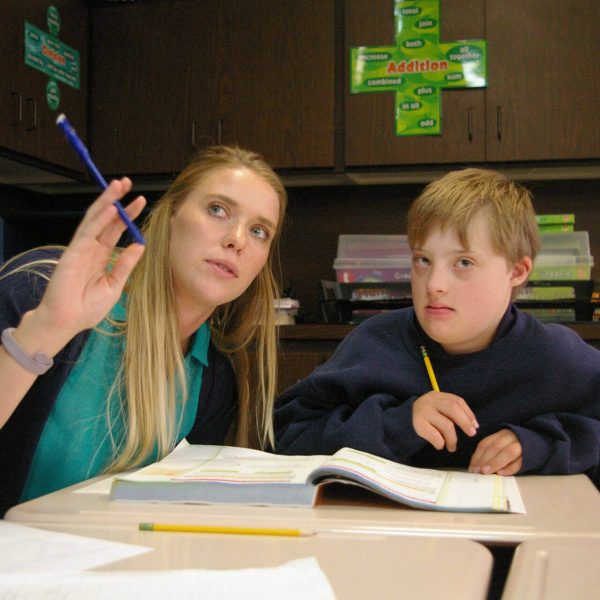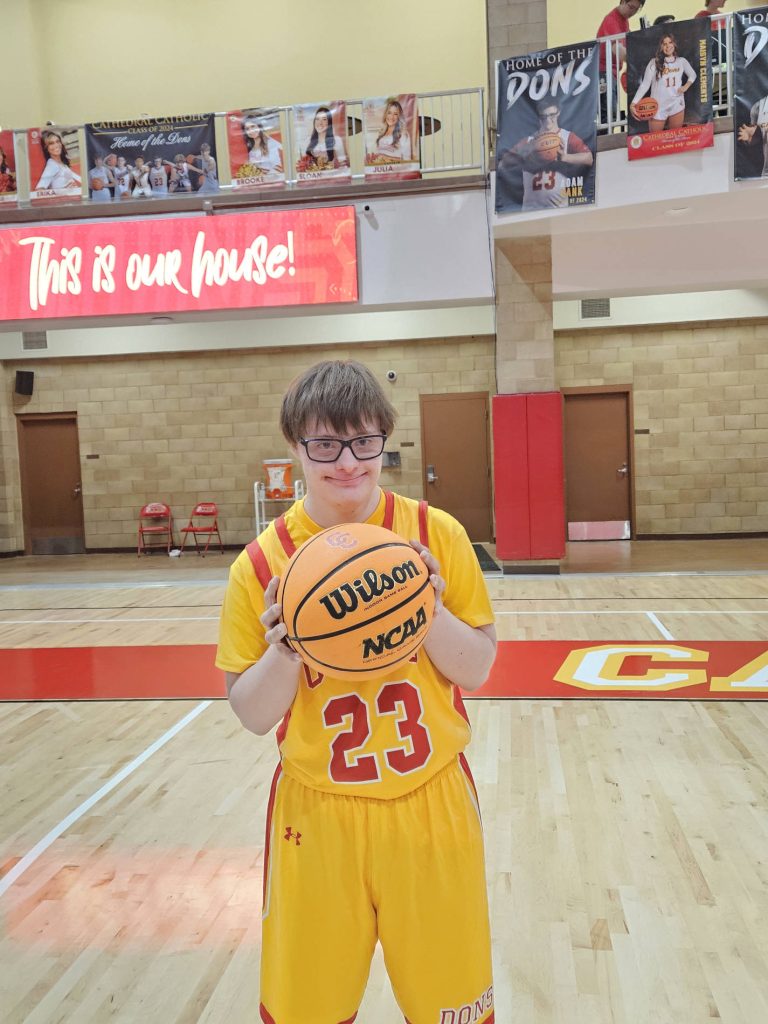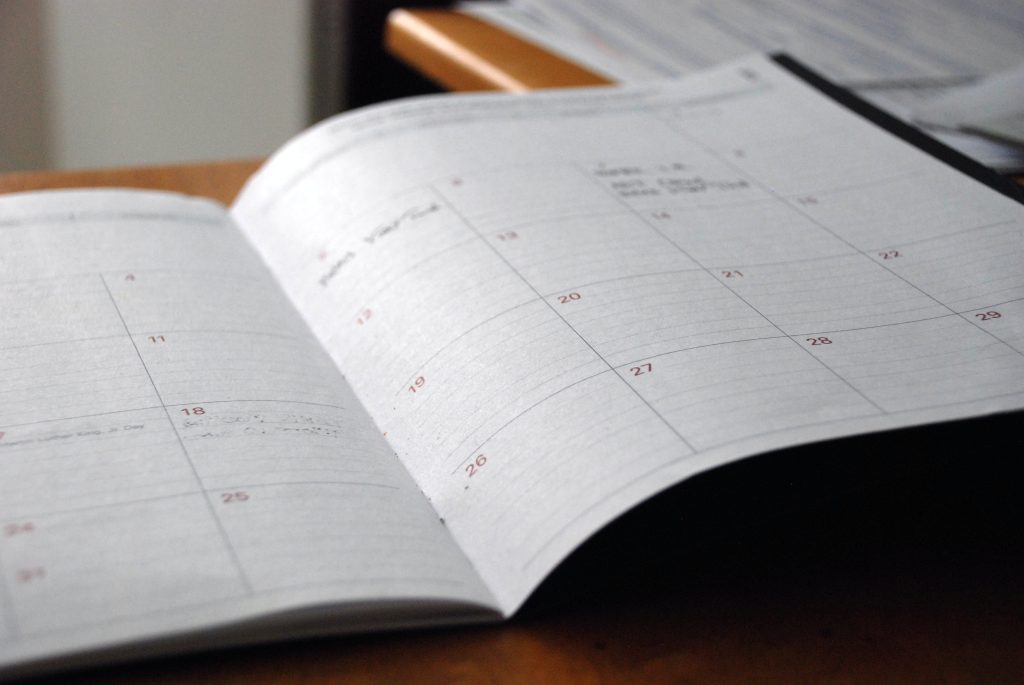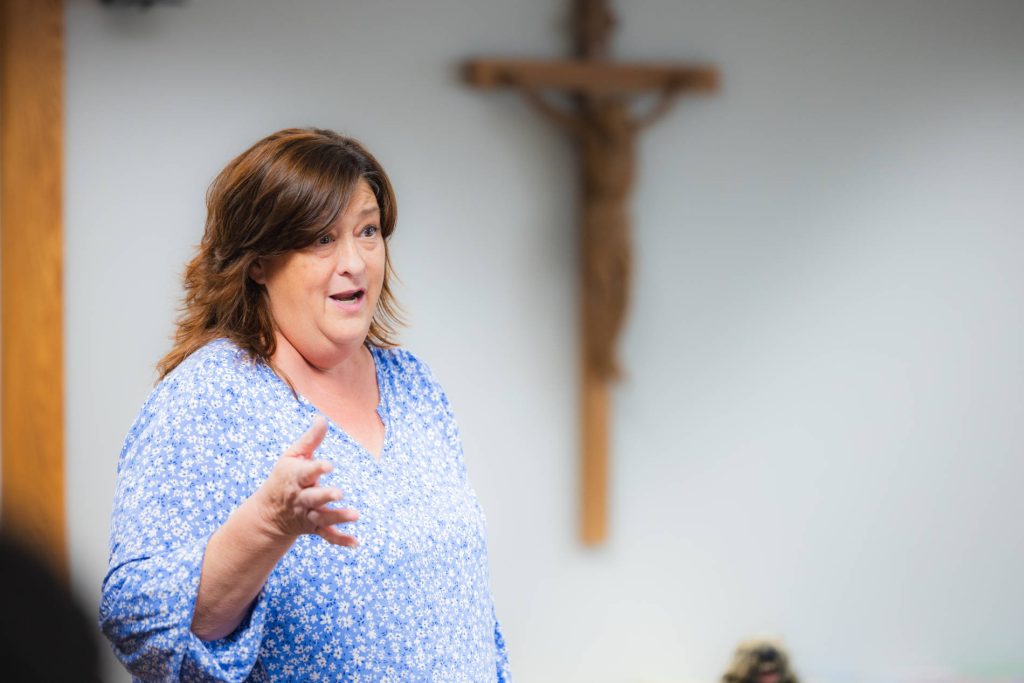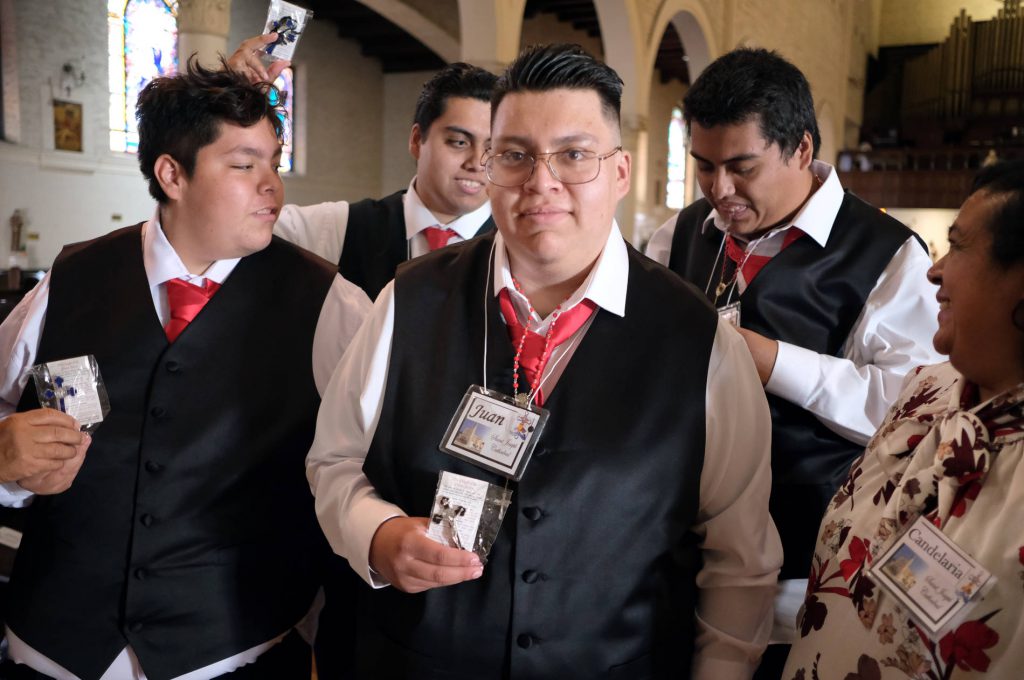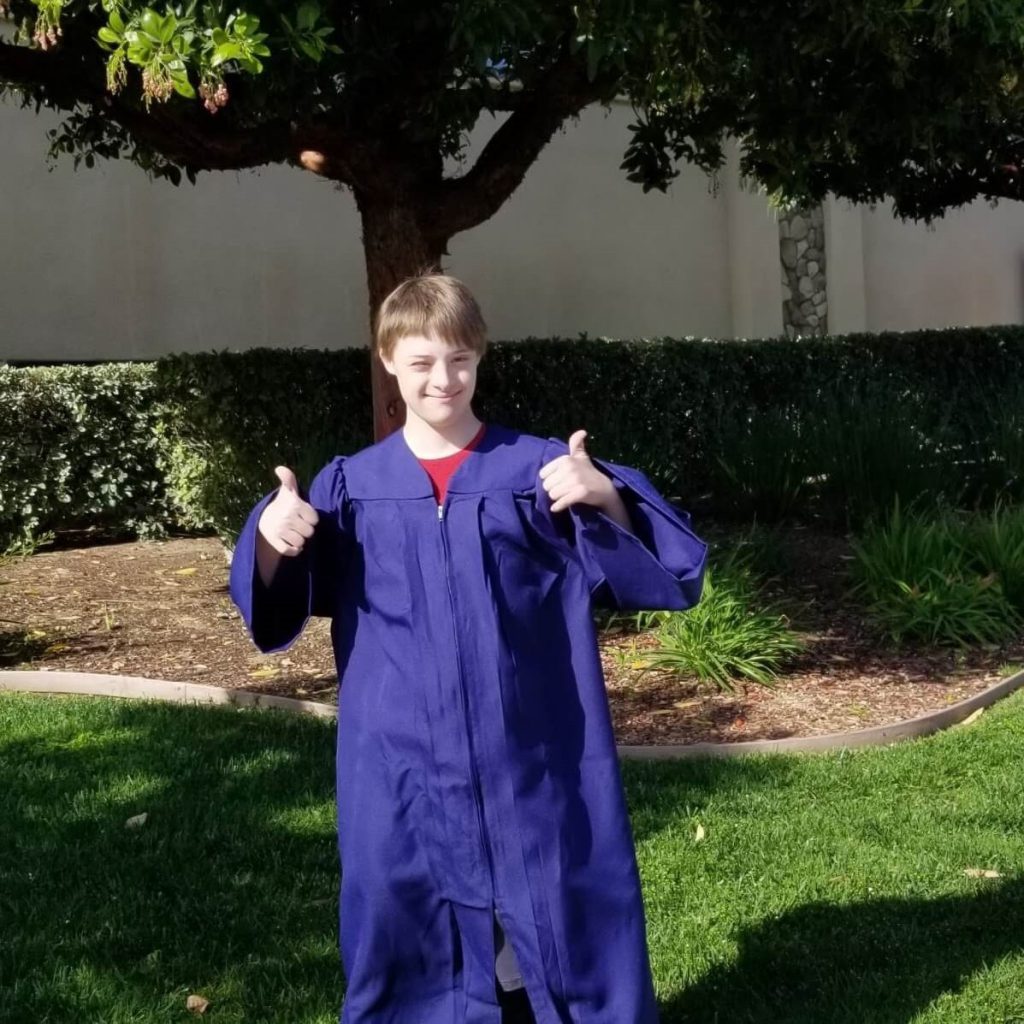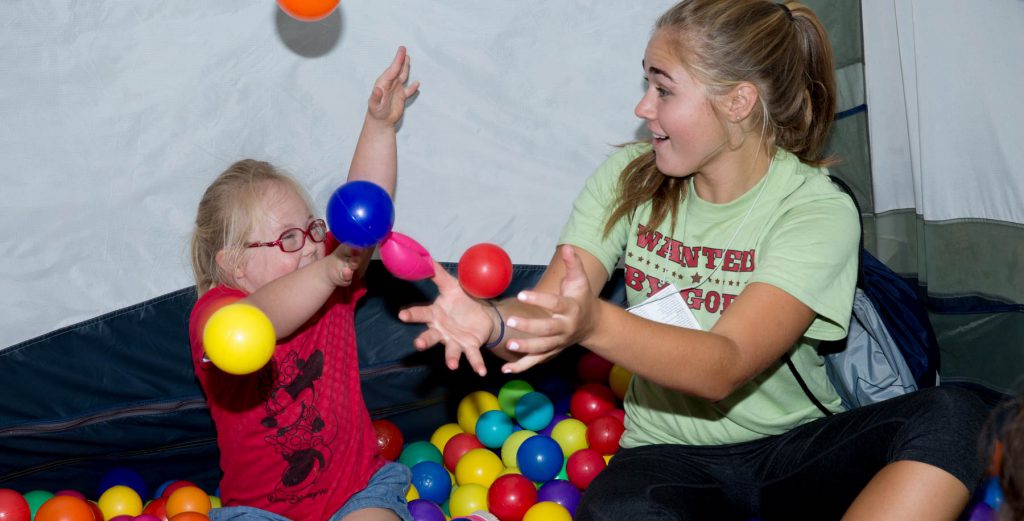SAN DIEGO — October is Disability Awareness Month and, in the Diocese of San Diego, there is cause for celebration.
Despite the common misconception that Catholic schools are not equipped to accommodate the needs of students with learning difficulties, nothing could be further from the truth.
Students with challenges ranging from dyslexia and other reading difficulties to auditory processing disorders, attention deficit hyperactivity disorder, autism and Down syndrome are currently enrolled and thriving at local Catholic schools.
“We have pockets of innovation at each of our schools,” said Dr. Julie Cantillon, associate director of the Office for Schools. But the problem has been that these successful approaches to inclusive education haven’t always been shared among the schools — and, at times, not even among classrooms at the same school.
That’s where the diocesan Office for Schools’ Learning Support Steering Committee comes in.
The nine-member committee was established about two years ago to share best practices across the diocese. Among other things, its members have created a handbook for Catholic educators, a flow chart to help schools start a learning support program, and a Web site with links to schools that currently have them in place.
Cantillon said that, when she began her career in Catholic education 15 years ago, the Church’s schools seemed to send the message — whether intended or not — that they were unable to work with even the mildest of learning disabilities. As a result, families were broken up, she said, because students with special needs were sent to public school instead of receiving a Catholic education alongside their siblings.
But in the past five years, she has seen a trend toward greater inclusion within Catholic schools. The Learning Support Steering Committee, particularly through its handbook, is working to further that trend by producing a set of procedures that can be adopted and adapted at each school.
“The goal is small steps,” Cantillon said. “What we want them to do is say ‘yes’ to one student that [they] otherwise would not have said ‘yes’ to.”
The Schools Office is currently aware of learning support programs in operation at 17 of the diocese’s 43 Catholic elementary schools, Cantillon said, and Cathedral Catholic High School is recognized nationally as having one of the best programs at the secondary education level.
Unlike Catholic schools, public schools often have an entire team of professionals, including a special education teacher, psychologist, occupational therapist and speech pathologist, at their disposal to serve students with learning difficulties, said Theresa Coyle, curriculum director at St. John School in Encinitas.
But even with this seeming disadvantage, Catholic schools have plenty of success stories.
St. John School’s learning support program consists of a director assisted by two teachers, said Coyle, who is a member of the Learning Support Steering Committee. She was recently told by the grateful parent of a graduating St. John’s student with special needs that the program works wonders, making a little go a very long way.
Cantillon agrees with Coyle, noting that what Catholic schools might lack in terms of personnel assigned to special education is offset by smaller student-teacher ratios and the possibility of more individualized attention from the classroom teacher, not to mention a Catholic school climate in which faith, family and community are emphasized.
Kristin Klant, assistant principal and learning support teacher at Our Lady of Grace School, said that smaller class sizes mean that, “in some cases,” Catholic schools actually can provide more for students with special needs than public schools can.
“I think the beauty of Catholic education is that you may have a learning disability, but you are a member of the class,” said Klant, who is also on the steering committee. “You are experiencing everything that your classmates are — just with appropriate accommodations or modifications.”
Adam Hank is a 12-year-old leukemia survivor with Down syndrome. Four years ago, after having attended public schools, a charter school and homeschooling, his parents Michael and Sharla enrolled him and his sister at All Hallows Academy, where he is now in the sixth grade. It was important to them that both of their children attend Catholic school together.
Something as simple as trying to write legibly requires much focus for Adam, as he lacks the core strength to sit up for long periods. Even with these and other hardships, his parents describe him as “a committed student, who gives his all to meet the challenges he faces each day.”
A student support assistant, provided by the Hank family, accompanies him to class every day. His teachers have accommodated his physical and learning disabilities by, among other things, allowing additional time for test-taking and modifying the format of those tests. The school’s learning center staff works to identify learning challenges and implement supports to help each student succeed.
Sharla Hank said that, while their family pays out of pocket for many things that might have been free if they had chosen to send Adam back to public school, it’s “a sacrifice we’re willing to make.” She noted that Adam is never treated as less than a full member of the class. He plays basketball at school, attends birthday parties with his classmates, and cannot attend a school function without others checking in with him and his parents.
“He loves it,” she said of All Hallows Academy. “This is his school. These are his friends. This is his family.”
In late 2016, the Hank family established the Catholic Special Education Fund through the Catholic Community Foundation of San Diego (ccfsd.org) to encourage and support inclusion in Catholic schools.
Cantillon said students with learning difficulties, far from being a hindrance, enrich the classroom and their presence often serves as an invaluable reminder that “not everyone’s gifts look the same.”
Echoing that sentiment, Coyle said these students help their classmates “know that God created us all differently.”
“Children with learning differences have so much more to give,” Coyle said. “The more opportunities that we give them to be placed in our Catholic environment, we’re just helping all of the children.”
As Cantillon reflects on how far the Catholic educational community has come on the issue of inclusive education, she acknowledges that the effort to make Catholic schools welcoming places for all students is “a work in progress.”
“We’re not there yet,” she said, “but we’re going to get there.”
For more information, access the Schools Office’s learning support Web page through sdcatholic.org (by clicking on “Schools,” and then “Professional Learning” and “Learning Support”) or directly at https://sites.google.com/ view/sd-catholic/learning-support.

